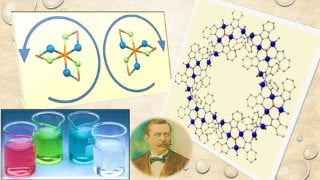Hacking the Periodic Table – Chemistry of the Elements
Learn the fundamentals of chemistry and gain a broader understanding of trends and applications in this comprehensive course. Perfect for professionals, students, and teachers, this course covers atomic concepts, periodic table trends, and the main group elements. Discover the practical applications of elements in various industries and explore topics such as oxidation states and noble gases. Whether you’re interested in general trends or specific reactions, this course is designed to enhance your knowledge and provide real-world examples. Ideal for beginners or those looking to review material chemistry knowledge.
What you’ll learn
- You will learn how to use concepts to understand applications
- Understand how you can use your chemistry knowledge to think outside the box
- Know how our description of atoms evolved from an atomic pudding to quantum mechanical models in just 29 years
- Understand how electrons like to arranged themselves around the atomic nucleus
- Know which state of matter is the rarest
- Know which elements like to take on or give up an electron to be more stable
- Learn why hydrogen is an important educt in chemical industry
- Understand why hydrogen can “hide” in metals and how this property can be used
- Study when asymmetry can be helpful to (dis)solve things
- Learn what industry can make with you table salt
- Understand how lithium can help you to store energy
- Know which industry is responsible for 8% of the global CO2 emissions and why
- Learn why people measure the hardness of water
- Grasp how a very reactive element can be used for cooking
- Learn why silicon likes to form networks and is very creative with it
Show moreShow less
You are a professional, a student, a teacher or just interested in general trends, reactions and applications of chemistry? Then this is the right course for you!
The concept of this course is not to only give textbook explanations to things, explain models. Instead it aims at using your knowledge to understand the bigger picture and apply the knowledge you gained.
To provide an appealing curriculum we combined the three big pillars of chemistry which is scientific research, application in industry and you as a student. By this we want to give scientific explanations to industrially relevant topics and show you how often you might meet certain elements without realizing it.
The curriculum of this course will cover the following topics:
– – – – – – – – PART 1 – – – – – – – –
This curriculum of this course will cover atomic concepts as a foundation to gain an understanding for the reactivity and behavior of elements as well as trends of the periodic table. Subsequently, we will have an in-depth look at the elements of main group 1 to 8 and their most interesting applications.
Introduction: The atomic model, orbitals and energy schemes
Introduction: Trends of the periodic table
Main Group I: Alkali metals (Focus lectures: Hydrogen and Lithium)
Main Group II: Earth-alkali metals (Focus lecture: Cement, Gypsum and hardness of water)
Main Group III: Boron group
Main Group IV: Carbon group
– – – – – – – – PART 2 – – – – – – – –
In this first part of the course we will cover the basics of the atom concept and cover the main group elements of group 1 to 4. In the second part of the course we will cover the concept and rules of oxidation states and cover the main group elements of group 5 to 8.
Introduction: Oxidation Numbers
Main Group V: Pnictogens
Main Group VI: Chalcogens (Focus lecture: Ozone-Oxygen cycle)
Main Group VII: Halogens (Focus lecture: Swimming pool chemistry)
Main Group VIII: Noble gases
Who this course is for:
- Anyone who is interested in basic concepts of chemistry
- Anyone who wants to gain a broader understanding of trends and applied chemistry
- Anyone who aims to review material chemistry knowledge of the first university years
User Reviews
Be the first to review “Hacking the Periodic Table – Chemistry of the Elements”
You must be logged in to post a review.







There are no reviews yet.